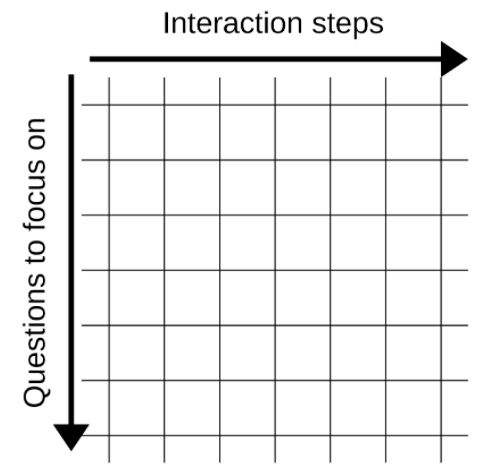

This article is an excerpt from the Shortform book guide to "Raving Fans" by Ken Blanchard and Sheldon Bowles. Shortform has the world's best summaries and analyses of books you should be reading.
Like this article? Sign up for a free trial here .
What does it mean to have ideal customer service? What steps can you take to ensure your customers leave your business happy?
In their book Raving Fans, Ken Blanchard and Sheldon Bowles argue that successful organizations have one common central focus: providing an excellent customer service experience. In their business fable, they outline what the ideal customer service experience looks like and five questions you should ask yourself as a business owner.
Continue reading to learn how to improve customer service at your company.
What Is Ideal Customer Service?
In the Raving Fans fable, the Fairy Godmother takes the Area Manager to a successful department store, owned by a previous student of “The Raving Fans School.” Throughout his visit, the Area Manager receives lavish attention and experiences excellent customer service. For example, the book he wants to buy is out of stock so the customer service attendant purchases the book from another store and gift wraps it for him at no extra cost.
When asked how the store can go to such great lengths to satisfy customers, the store owner explains he created a complete vision of excellent customer service centered on looking after customer needs wherever possible. This vision informs how he interacts with his customers.
(Shortform note: The customer service attendant at the bookstore uses creative problem solving to exceed the Area Manager’s expectations. This is just one way to deliver outstanding customer service. Others include actively listening to the customer’s needs, having a positive attitude, and knowing your product well.)
One Negative Customer Experience Can Damage Your Reputation
Blanchard and Bowles argue that customer experience is the impression your customers have of your business as a whole. Your customers judge their experiences with you based on the emotions they feel during the sum total of their interactions with you. This means that if they have a bad experience during one stage of their interactions with you, their judgment of you will go down regardless of how excellent the rest of your service was. This judgment impacts their sense of loyalty to you. Therefore, a great customer experience comes from providing excellence at every stage of contact.
| According to one customer loyalty report, 63% of consumers confirmed they’d consider moving to a competitor after a single bad experience. However, the impact of a single negative customer experience doesn’t simply end with the loss of current revenue. Consumers are quick to vent their frustrations in public ways and these complaints rarely go unnoticed. Consider these statistics: 93% of consumers base their decisions on online reviews. 80% of consumers won’t buy from businesses with negative reviews. Therefore, a single negative customer experience doesn’t just result in the loss of existing customers, but also damages your reputation and has detrimental effects on your ability to acquire new customers. |
How to Define the Ideal Customer Experience
To define your ideal customer service experience service, the authors suggest that you consider every interaction customers may have with your business from your customers’ point of view. Next, you need to create a vision of how you want to serve your customers at each of these interaction points.
Shortform Exclusive: The Customer Journey Map
Blanchard and Bowles don’t offer practical steps to define your customer service experience vision. To help focus your vision, consider creating a customer journey map that details the actions your customers take during their entire engagement with your business.
First, create a chart and list each interaction step horizontally on your first row. This is an example of a few of the journey steps for a small offline store:
| Step 1: Customer arrives at your store | Step 2: Customer searches for a specific product | Possible Step: Customer seeks product information | Step 3: Customer purchases the product |
Next, list these questions down the first column of your chart:
- What potential problems or hurdles can I eliminate?
- How can I make the process easier or more intuitive for them?
- How can I engage with them so they feel valued?
- How can I differentiate my customer experience service from what my competitors offer?
- What can I provide here to really impress my customers?
You’ll end up with a chart that looks like this:

You may need to create multiple maps depending on how you operate. For example, if your customers interact with you both online and offline, it might be useful to create separate maps for both experiences. In addition, if you offer multiple products and services, your customers may take different journeys depending on what they want to achieve. Ensure you consider every variable and channel to create a complete inventory of all possible steps your customers can take.
Use the chart(s) you’ve created to brainstorm ideas on how you can provide excellent service throughout each interaction. For now, just focus on your ideal experience—don’t worry about what you can realistically achieve (we’ll cover that in Step 3).
This is a simple example of a partially filled-out customer journey map for a small offline store. Note that the emphasis is on the ideal way the store would please their customers—not on whether the ideas are currently achievable.
| Step 1: Customer arrives at your store | Step 2: Customer searches for a specific product | |
| How can I eliminate potential problems or hurdles? | -Free parking-Clearly displayed opening times & store policies-Accessibility options for strollers & wheelchairs | -Products clearly priced-Staff to stock shelves during quiet times to keep aisles free & clean |
| How can I make the process easier or more intuitive for them? | -Plenty of parking space | -Organized product placement-Clear signposting |
| How can I engage with them so they feel valued? | -Have someone welcome them in person-Provide feedback stations at every step | -Suggest substitutions for out of stock items |
| How can I differentiate my customer experience service from what my competitors offer? | -First impression: Clean & Organized | -Fresh produce-Fully stocked shelves-Happy staff on the aisles-Free samples for cheese/fresh produce sections |
| What can I provide here to really impress my customers? | -Free supervised child care-Complimentary drinks | -Offer a concierge service-Arrange to order the items not currently carried & organize delivery-Offer custom shopping lists based on the customer’s recipe ideas |
For further ideas and inspiration, these companies offer the best customer service according to the American Customer Satisfaction Index (ACSI).
Once you’ve created your vision of what you want to offer, you’ll have a list of specific ways that you can create excellent customer service experiences. You’ll also have a good idea of where you need to make improvements.

———End of Preview———
Like what you just read? Read the rest of the world's best book summary and analysis of Ken Blanchard and Sheldon Bowles's "Raving Fans" at Shortform .
Here's what you'll find in our full Raving Fans summary :
- A business fable exploring why it's critical to turn your customers into "raving fans"
- How to apply the principles of outstanding customer service
- A range of exercises to help you transform your customers into your biggest fans






